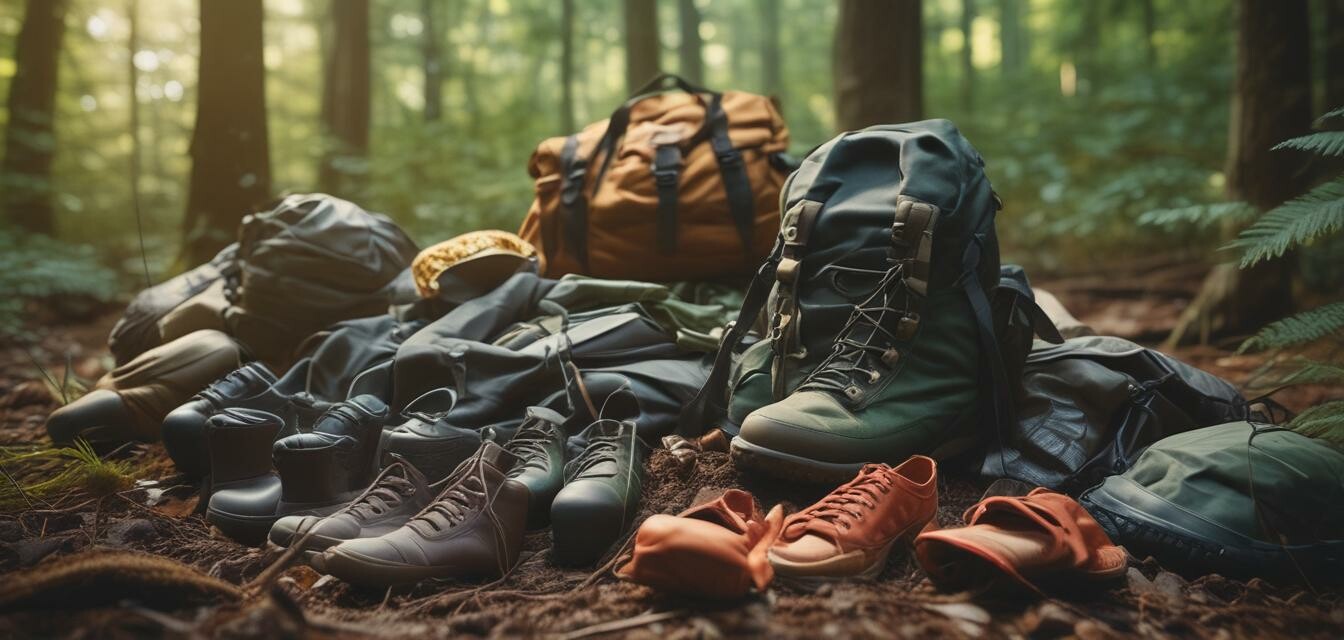
As an Amazon Associate, I earn from any qualifying purchases, at No Extra Cost to You.
Choosing the right footwear for long hikes
Key Takeaways
- Proper fit is critical for preventing blisters and discomfort.
- Consider the terrain for appropriate support and traction.
- Comfort and weight of the footwear can impact your hiking experience.
- Breaking in your footwear before long hikes is essential.
- Know the different types of hiking footwear available to find the best match for your needs.
Choosing the right footwear for long hikes is crucial to ensuring a comfortable and enjoyable experience on the trails. Proper footwear not only provides support but also helps in preventing injuries and discomfort during extended backpacking trips. This guide will focus on fit, comfort, and support while considering the various types of footwear available for hikers.
The importance of fit
Fit is perhaps the most critical factor when selecting footwear for long hikes. Ill-fitting shoes can lead to blisters, calluses, and foot fatigue. Here are a few tips to ensure the right fit:
- Try footwear on in the afternoon when your feet are slightly swollen.
- Ensure there is enough room in the toe box – your toes shouldn't touch the front of the shoe.
- Walk around in the shoes to check for comfort and movement.
- Consider the width of your foot; different brands might offer different fits.
Comfort: A key factor
Comfort is essential for enjoying your hiking experience. Here are several elements to consider:
- Cushioning: More cushioning can absorb impact and enhance comfort.
- Weight: Lightweight footwear reduces fatigue during long hikes.
- Arch support: Proper arch support can prevent foot pain.
Support for different terrains
Hiking footwear must provide adequate support based on the terrain. Here’s a breakdown:
| Terrain Type | Recommended Footwear Features |
|---|---|
| Rocky or rugged trails | Sturdy ankle support and aggressive tread |
| Soft or muddy ground | Water-resistant or waterproof materials with good traction |
| Flat and even surfaces | Lightweight shoes with flexibility |
Types of hiking footwear
Different styles of footwear can serve various purposes:
- Trail running shoes: Great for lighter hikes and quick movement.
- Day hiking boots: Ideal for short to moderate hikes with some elements of support and protection.
- Backpacking boots: Designed for longer hikes with heavy packs, offering more support and durability.
- Sandals: Suitable for warmer weather and casual hikes but may lack foot support.
Breaking in your footwear
It's essential to break in your footwear before embarking on long hikes. Here are some steps:
- Wear them around the house to get accustomed to the fit.
- Take them on short walks to test comfort and functionality.
- Crumple the sole and flex the shoes to help the materials soften.
- Gradually increase the length of your walks until your footwear feels natural.
Additional considerations
Aside from fit and comfort, consider the following:
- Breathability: Look for breathable materials to keep your feet dry.
- Insulation: Insulated options may be needed for cold weather hikes.
- Price: Balance your budget with the need for quality footwear.
Conclusion
Choosing the right footwear for long hikes is vital to enhancing your outdoor adventure. Ensure to prioritize fit, comfort, and the specific requirements of the terrain. By being informed and prepared, you can make the right choice for your hiking needs.
Pros
- Improved comfort and reduced fatigue.
- Injury prevention during long hikes.
- Enhances overall hiking experience.
Cons
- Finding the perfect fit may take time.
- Quality footwear can be an investment.
- Breaking in shoes requires effort.
For more information on choosing the best gear for your hike, check out our guides on buying hiking gear, or explore our selection of clothing and footwear tailored for outdoor adventures.